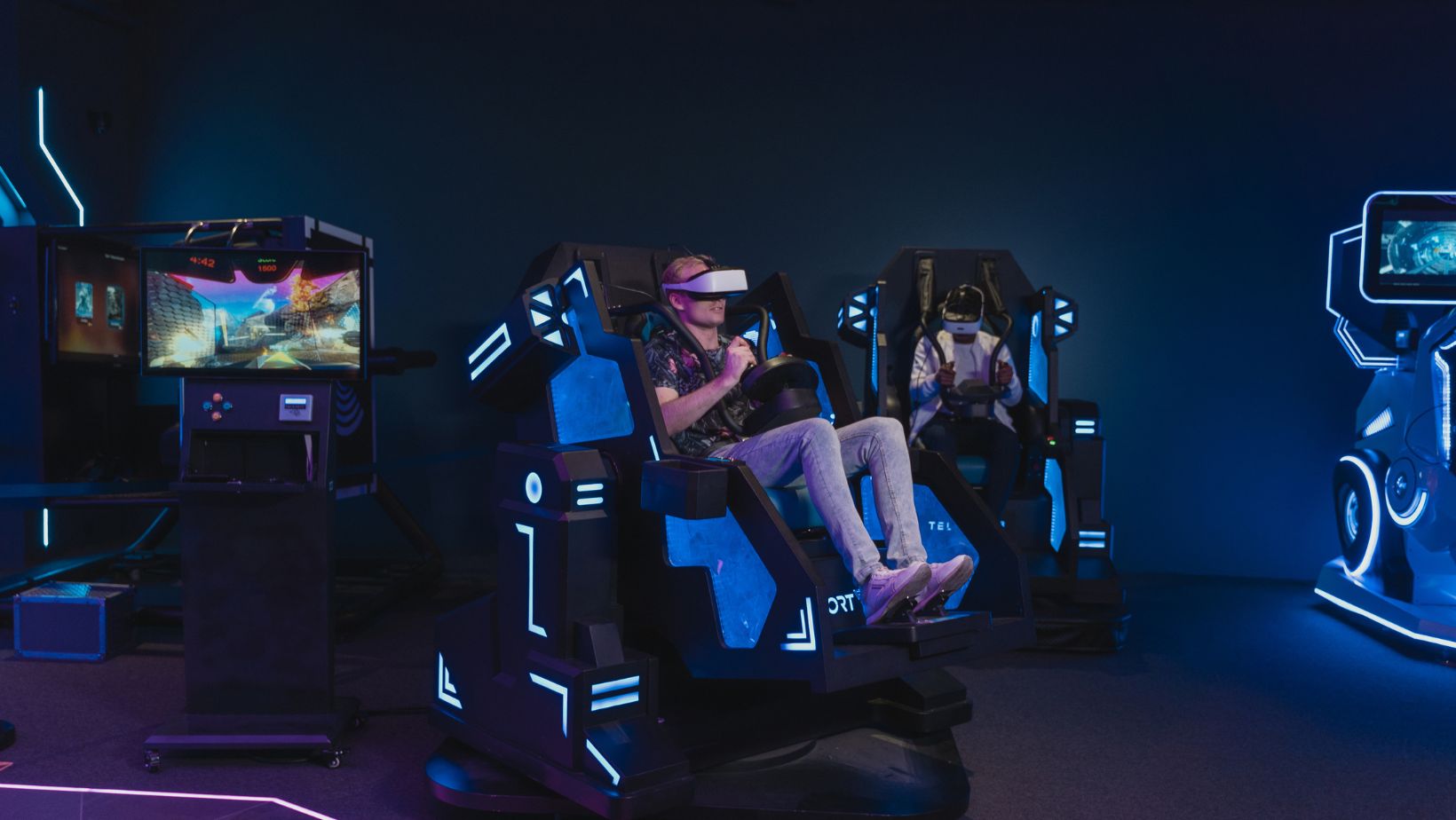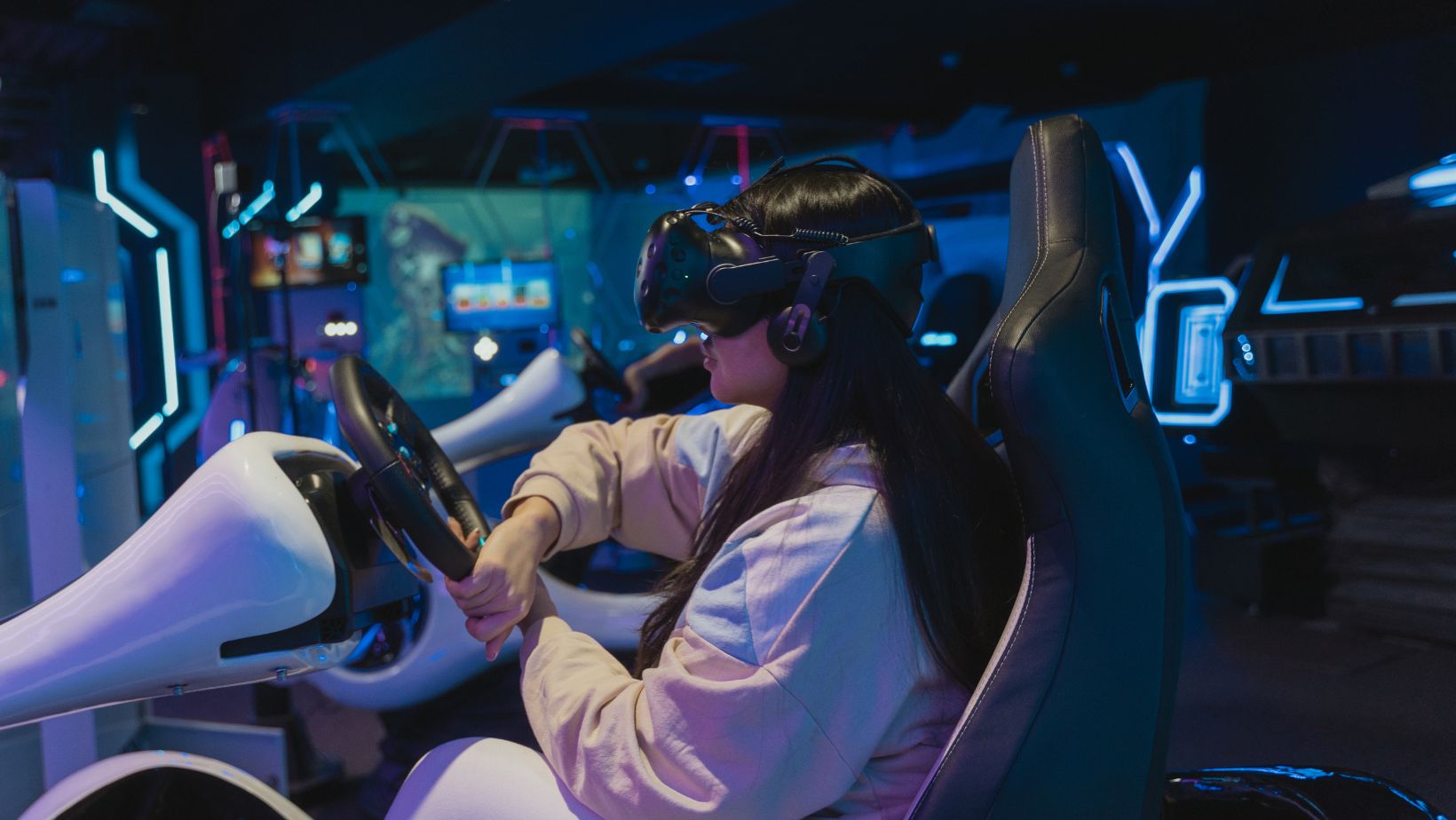Virtual reality (VR) has emerged as one of the most revolutionary technologies in the gaming world. Over the last decade, VR has progressed from being a futuristic concept to a tangible experience that is shaping how players interact with video games. As online technology continues to advance, VR is becoming an increasingly immersive way for gamers to step inside digital worlds, making their experiences feel more real than ever before. But it’s not just the hardware that’s advancing; online tech, such as proxies, is also playing an essential role in transforming the gaming landscape.
The Evolution of Virtual Reality in Gaming
Virtual reality has been a long-standing dream for many in the tech world. In the 1980s and 1990s, VR was hailed as the future of entertainment, but the technology wasn’t quite ready for mainstream adoption. It wasn’t until the 2010s that significant progress was made. Companies like Oculus (now owned by Facebook), HTC, and Sony began releasing consumer-grade VR headsets that offered immersive experiences with improved graphics, lower latency, and better affordability.
The advancement of VR technology has opened up new possibilities for gaming. Instead of merely staring at a screen, players now have the opportunity to step inside the game itself. With the help of a headset, motion sensors, and hand controllers, users can physically move through virtual worlds. This level of immersion is unlike anything traditional gaming has offered before.
Key Factors Driving the Rise of VR in Gaming
-
Improved Hardware and Software
One of the primary factors behind the rise of VR is the continuous improvement in both hardware and software. VR headsets have evolved from bulky and uncomfortable devices to sleek, lightweight, and highly functional gear. Graphics and processing power have advanced to the point where virtual worlds can now feel incredibly lifelike, with minimal lag and jitter. Additionally, game developers have been hard at work optimizing their titles for VR, ensuring that they offer smooth gameplay and intuitive controls.
-
Increased Accessibility
The cost of VR headsets has also been steadily decreasing. While early VR systems were prohibitively expensive for most consumers, today’s headsets—like the Oculus Quest—are far more affordable, with prices that range from a few hundred dollars to less than a thousand. This price reduction has made VR more accessible to a broader audience, fueling its adoption in the gaming community.
-
Social and Multiplayer Experiences
Another significant development in VR gaming is the rise of multiplayer and social VR experiences. Platforms like VRChat and Rec Room allow players to interact with others in virtual spaces, engaging in both cooperative and competitive games. Social experiences like these have transformed VR from a solitary activity into a shared experience, opening up new possibilities for gaming communities.

-
Enhanced Immersion
Virtual reality’s most compelling feature is its ability to immerse players in the game. Unlike traditional gaming, where players view the action on a screen, VR makes players feel like they are physically inside the game world. This level of immersion leads to a heightened sense of presence and emotional engagement. Whether it’s exploring the vast landscapes of a fantasy world, battling aliens in an outer space setting, or surviving a zombie apocalypse, VR makes everything feel more tangible.
The Role of Online Tech in the Growth of VR
As VR continues to grow, so too does the importance of online technology in shaping its future. Multiplayer online gaming has become a central part of the VR experience, and fast, reliable internet connections are crucial for seamless gameplay. This is where services like proxy servers come into play.
Proxies have become increasingly important in ensuring smooth, uninterrupted gameplay for online gamers. When gaming online, especially in a VR environment, a fast and stable connection is essential for minimizing latency and reducing lag. Players who experience lag or connection interruptions may find their gaming experience ruined by stuttering movements, delayed actions, or even disconnections from the server.
By using proxy services, gamers can enhance their online experience by masking their IP addresses and bypassing geographic restrictions. This can be particularly useful when accessing VR multiplayer games that may be restricted in certain regions. Additionally, proxies can help players connect to servers that offer lower ping times, ensuring faster and more responsive gameplay.
For those looking to improve their VR gaming experience, the ability to purchase proxy online has become a common solution. By using proxies, players can access a variety of international servers, improving connection speed and reducing latency, all while maintaining online anonymity. This added layer of protection allows gamers to focus on their immersive VR experiences without worrying about interruptions from slow internet connections or unfair geo-blocking.
VR’s Impact on Game Development
The rise of VR has forced game developers to rethink their approach to game design. Developing for VR is fundamentally different from creating traditional video games. Developers must consider how players move and interact with virtual environments. This includes the use of motion tracking, hand gestures, and voice commands to control the game. The design of in-game environments also takes on new importance—developers now focus on creating immersive worlds that engage all of the player’s senses, from sight and sound to touch and motion.
One of the challenges of VR game development is the need to minimize motion sickness. Because the technology is still relatively new, many players experience nausea or discomfort when they move too quickly, or the game world moves too fast. Developers are constantly working to improve the VR experience by fine-tuning the frame rate, camera movement, and user interface to make games more comfortable for players.
Moreover, VR is pushing the boundaries of storytelling. Games are no longer limited to linear narratives that unfold on a screen. Instead, players can explore story-driven experiences from different perspectives, allowing them to feel as though they are part of the plot.

This has opened up new possibilities for narrative-driven VR games, which aim to provide players with emotionally engaging and interactive stories.
The Future of VR Gaming
As VR technology continues to evolve, the future of gaming looks incredibly exciting. In the near future, we can expect to see even more immersive VR experiences with better graphics, faster processing, and more lifelike interactions. We may also see the integration of other emerging technologies, such as artificial intelligence (AI) and machine learning, which will enhance the realism of virtual worlds and improve game design.
One of the most promising developments in VR gaming is the possibility of cross-platform play. In the past, VR gaming has been limited to specific platforms, with players on different systems unable to interact with one another. However, as VR platforms continue to improve, the lines between different gaming ecosystems are starting to blur. In the future, players may be able to join virtual worlds together, regardless of the hardware they are using.
Additionally, the growth of the metaverse—a virtual universe where people can work, play, and socialize—will likely have a profound impact on VR gaming. As more companies invest in the metaverse, we may see the development of massive, persistent VR worlds that blend gaming, social interaction, and commerce into one unified experience. This will open up new opportunities for game developers, players, and businesses alike.
Conclusion
The rise of virtual reality has already started to reshape the gaming industry, bringing about a level of immersion and interactivity that was once the stuff of science fiction. As online technology continues to advance, VR gaming is only going to get better. The integration of online tech, like proxies, will continue to help improve the overall gaming experience, ensuring faster, more stable connections for multiplayer VR games.
With VR technology improving at a rapid pace and new game genres and experiences emerging, the future of gaming is more exciting than ever. Players who embrace VR will find themselves transported to worlds that are rich in detail and interactive in ways that were once unimaginable. Whether it’s exploring vast, open worlds, engaging in multiplayer battles, or experiencing emotionally charged narratives, VR is redefining what it means to be a gamer in the digital age.

